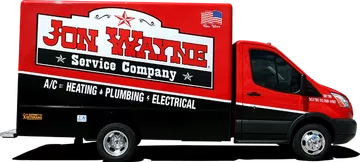How HVAC Zoning Works
- Tagged:
- Tips
A zoning system for your HVAC system is a way to control the temperature for each area, or “zone” in your home, rather than have to heat or cool the whole house to the same temperature. With a zoning system, you can set temperatures differently for either individual rooms or sections of your home.
Typically, with forced air systems there is only one thermostat to control the heating and cooling for the entire home. Once that thermostat calls for heating or cooling there is virtually no way to control the temperature in each room of the house except by manually closing off the outlets in each room. This manual method is time-consuming and can cause harm to the HVAC unit, as closing off too many outlets can reduce the airflow. This could shorten the life of the furnace, air conditioner or heat pump.
Zoning solves this problem. It also allows you to save energy (and therefore money) by not heating or cooling rooms when they don’t need it. If, for example, you live in a two-story home and don’t use the upstairs very much, you can set the thermostat upstairs so that it doesn’t call for heat or cool air very often.
A zoning system is a professionally installed control system consisting of a damper and thermostat for each room or zone of the house. This control system is wired into a central control panel that sequences each thermostat’s call with the zone dampers in the ducts and the HVAC system.
How does zoning work?
Zoning is a simple product and concept. Zoning provides the ability to only condition those rooms that need heating or cooling and does not allow conditioned air into those zones not requiring it. Zoning does this through a series of components, the first being motorized dampers that open and close based on the demands of the zone thermostats. These dampers insert into the ducts or can be installed at the air outlet for each room or zone. Multiple dampers can be controlled together for a single zone if multiple ducts serve a single room or zone.
The next key components are the zone thermostats. In existing homes, the existing thermostat can be used as a zone thermostat. As each zone is divided, each zone uses a thermostat to control the heating, cooling and fan operation for its individual zone. The zone thermostats and dampers are wired into a central control panel. The panel then also connects to the thermostat connections on the HVAC Unit. Instead of using one central thermostat, the control panel allows the unit to be controlled by multiple thermostats.
As each thermostat calls for heating or cooling, the panel takes the first call from any zone. If it’s heating, for example, it will keep open the damper to the calling zone, close the dampers to satisfied zones not calling for heating, activate the furnace or heat pump and begin supplying air only to that zone. If during this call other zones call for heating, those zone dampers would open and heated air would be supplied to those zones as well. Once all heating calls are satisfied the panel will shut off the furnace or heat pump.
To understand why zoning makes sense, think of it like having a light switch in every room of the house. You wouldn’t install just one light switch to turn on and off all of the lights in the house, would you? The same is true for heating and cooling. One thermostat turning on the heating or cooling for the entire house, when you only need it in one room or zone, wastes energy.
Ready To Chat About a New Zone Control System? Call Jon Wayne.
Contact Jon Wayne today to schedule a custom zone control system consultation. Our HVAC experts will help you find the perfect system for your home based on your heating/cooling needs and budget. When you hire Jon Wayne, you can count on 5-star service and honest equipment recommendations, backed by a 100% Satisfaction Guarantee.
- Tagged:
- Tips

